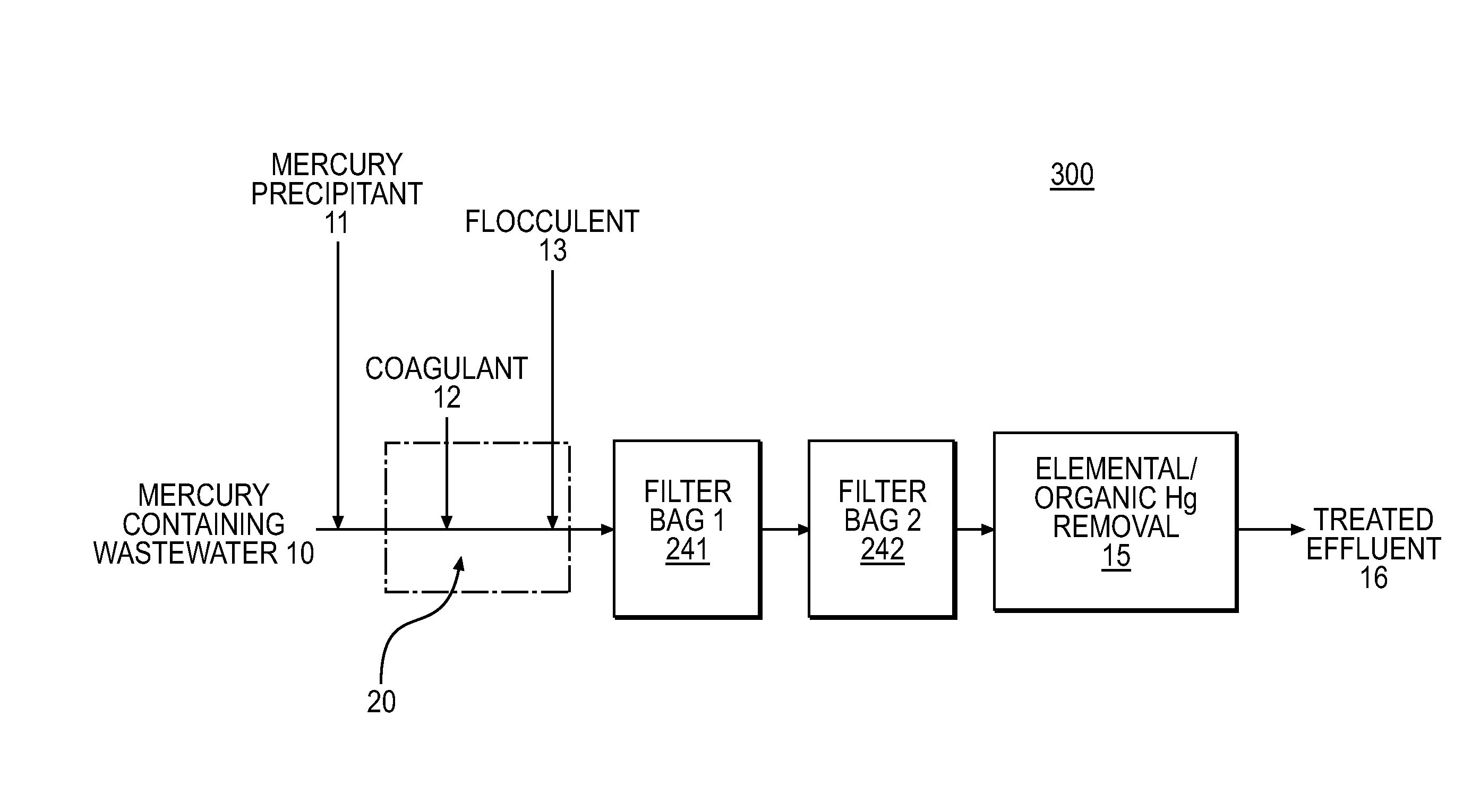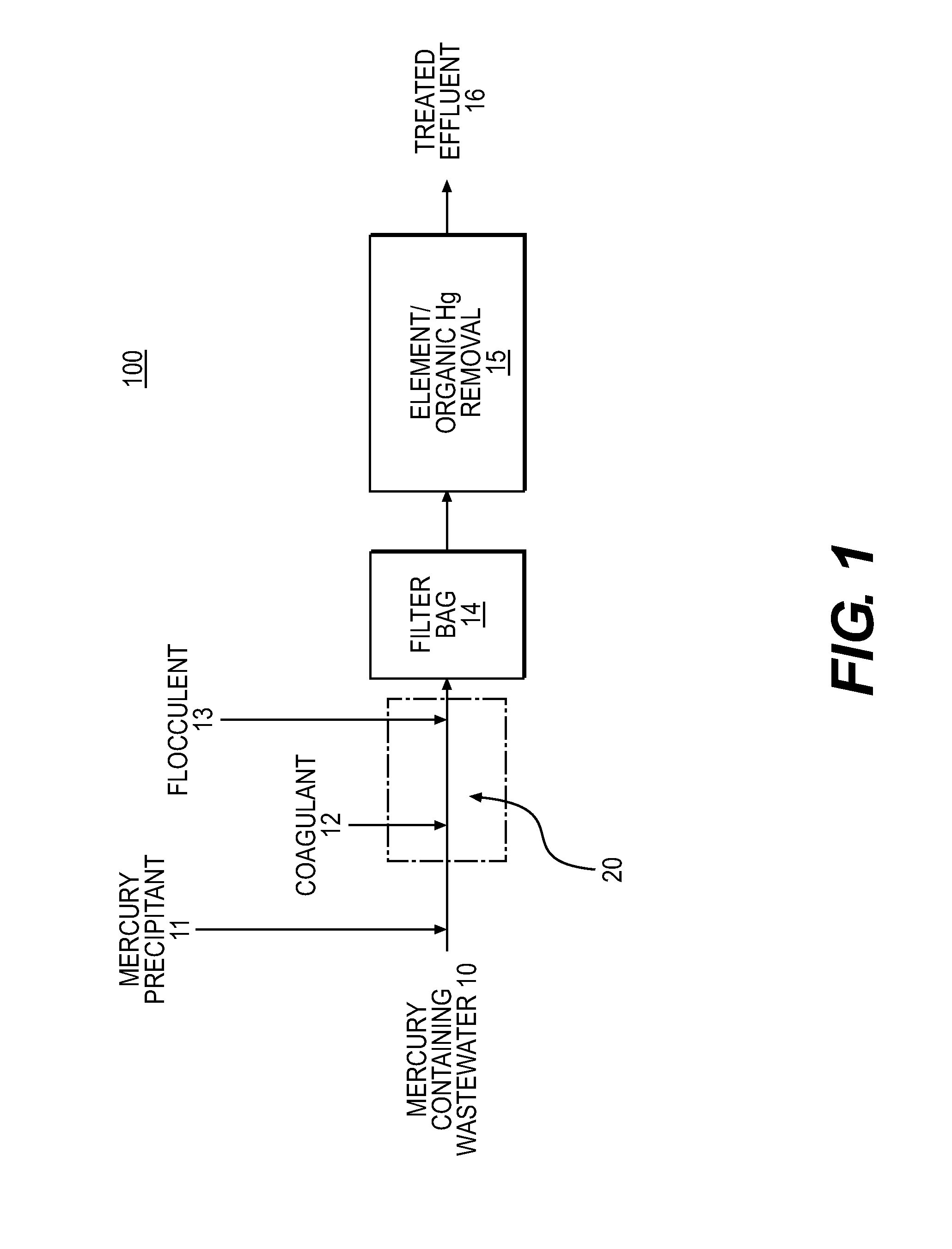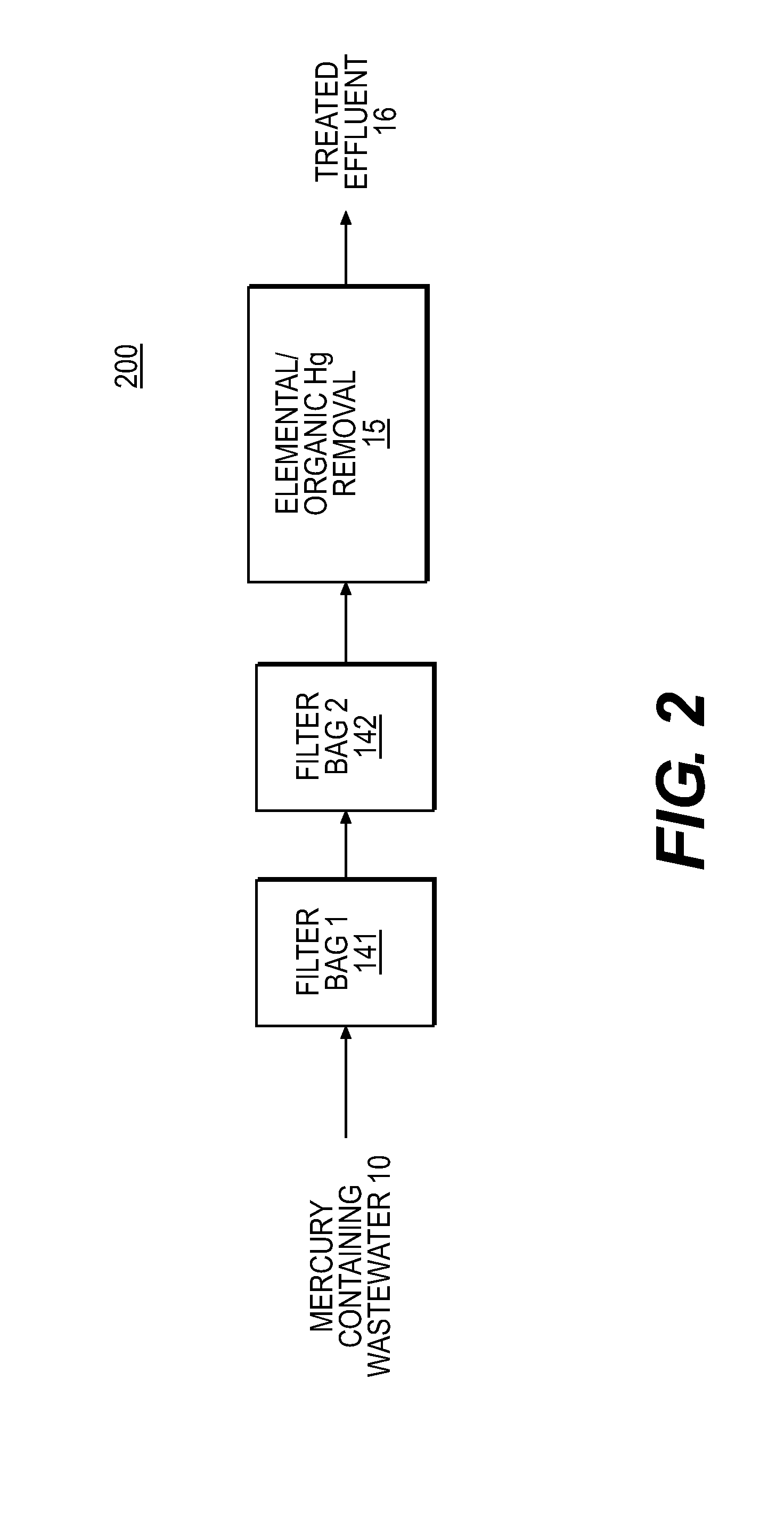Method and apparatus for performing surface filtration for wastewater mercury removal
a technology of surface filtration and wastewater, applied in the direction of multi-stage water/sewage treatment, separation process, treatment water, etc., can solve the problems of reducing the life of processing catalysts, affecting the quality of wastewater treatment, and problematic processing, so as to avoid adverse interactions
- Summary
- Abstract
- Description
- Claims
- Application Information
AI Technical Summary
Benefits of technology
Problems solved by technology
Method used
Image
Examples
Embodiment Construction
[0022]The following preferred embodiments of the presently disclosed subject matter are described by way of illustration.
[0023]FIG. 1. illustrates a treatment unit 100 in accordance with the presently disclosed subject matter. As shown in FIG. 1, the mercury-containing aqueous stream enters a treatment unit 100 through line 10. A water-soluble mercury precipitant is fed in through line 11 to mix with the aqueous solution. A coagulant is fed in through line 12 to mix with the aqueous solution. A flocculent is fed in through line 13 to mix with the aqueous solution. It is also contemplated that the precipitant, the coagulant and the flocculent may be premixed and supplied to the aqueous stream through a single line. It is also contemplated that the precipitant, the coagulant and the flocculent may be mixed with the aqueous stream within a holding tank 20. The precipitant may be added to the stream prior to entry in the holding tank 20 with the coagulant and the flocculent being mixed ...
PUM
| Property | Measurement | Unit |
|---|---|---|
| Fraction | aaaaa | aaaaa |
| Speed | aaaaa | aaaaa |
| Particle size | aaaaa | aaaaa |
Abstract
Description
Claims
Application Information
 Login to View More
Login to View More - R&D
- Intellectual Property
- Life Sciences
- Materials
- Tech Scout
- Unparalleled Data Quality
- Higher Quality Content
- 60% Fewer Hallucinations
Browse by: Latest US Patents, China's latest patents, Technical Efficacy Thesaurus, Application Domain, Technology Topic, Popular Technical Reports.
© 2025 PatSnap. All rights reserved.Legal|Privacy policy|Modern Slavery Act Transparency Statement|Sitemap|About US| Contact US: help@patsnap.com



